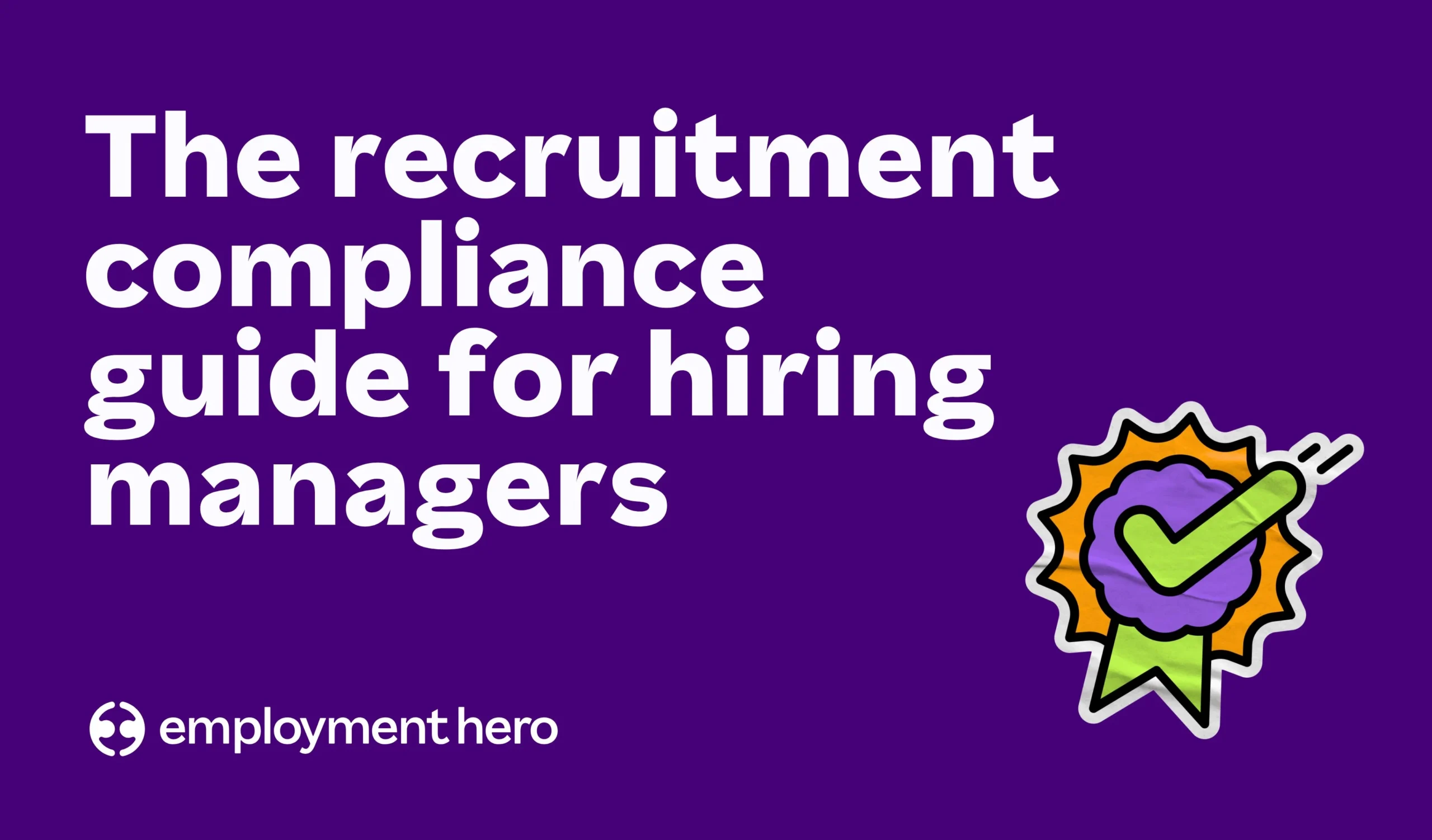How to deal with a bad manager in your team [Free eBook]
Published
How to deal with a bad manager in your team [Free eBook]
There’s a lot of truth in the saying that people don’t leave companies, they leave bad bosses. Dealing with a difficult boss can often leave team members frustrated and potentially push them to look for a new job
If your turnover rates are problematic, the first thing you need to do is identify whether you have any toxic bosses within your organisation.
For insights on managing difficult employees, check out our guide on how to manage toxic staff in the workplace here.
You can equip them with the soft skills and emotional intelligence training they need to turn them from a bad boss into successful ones.
What you’ll learn:
- What makes a manager bad.
- The 7 traits of a good manager.
- How to conduct exit interviews to get feedback on departing employees.
- Actions to take with bad managers.
- Much, much more on how to save your business from bad bosses!
Download our free guide now.
Considering digital solutions can streamline your HR processes and help identify problematic managers more effectively. Learn about the benefits of taking HR digital here.
What are the characteristics of a bad manager?
Being a manager can be really challenging. Most people become managers by excelling in their roles and taking a natural progression up the career ladder, never necessarily learning how to actually manage in the process, and are not provided with a support network they can seek advice from.
Because of this somewhat flawed model, most people in the role never learn or even consider what skills are necessary to be a great manager.
When soft skills (skills that often relate to effective communication in a working relationship) aren’t developed, toxic management characteristics can often emerge. The added pressures that managers often face can also see them overlook leadership skills.
Although most managers have the best intentions to do a good job, falling into a bad management style can have disastrous effects. Not only can it create a toxic workplace culture, but it can also affect your employee’s mental well-being and have great people on your team running for the door.
For tips on improving workplace culture, explore our bundle of 30 ways to enhance your workplace culture here.
After all, your manager is likely the person that you’ll be dealing with most in the workplace; if you have to endure a difficult leadership style, most would opt for personal wellbeing and wouldn’t hesitate to look for an out.
So what characteristics can we look out for to help us identify a bad manager – established or in the making?
If you spot one of these management styles, it’s time to take action.
1. Micromanaging
During the pandemic, we saw a reinvention of one of the worst leadership styles, micromanagement.
This toxic boss trait has always shown a lack of trust that generally leaves employees feeling stressed and uncomfortable, but with the introduction of forced remote working during lockdown conditions, some toxic bosses took it to the next level.
“My boss has announced that while we’re all working from home, the entire company will now be spending the whole work day on a Zoom call with video,” a disgruntled reader wrote to Alison Green at The Cut.
“But don’t worry, we are still allowed to have bathroom breaks and get snacks (wow, thanks so much!), though the majority of our work day should be spent in this weird online room with video and we are supposed to be “dressed for work.”
It is obviously insulting and a poorly disguised attempt to micromanage. It’s especially frustrating because during this time I have taken on additional responsibilities and my output has increased. I find this demoralising to the point that I’ve started job hunting.”
Micromanaging – whether it’s as extreme as this case or not – can often make employees feel undervalued. And why wouldn’t they? Micromanagers essentially don’t trust their team to get the job done correctly.
It can also be counterproductive, work takes longer and deadlines are stretched due to the manager’s time-consuming evaluation of an employee’s work.
2. Absent
Now to the other end of the spectrum. Absent managers can be just as frustrating as micromanagers, as they essentially abandon their team to guide themselves instead of being the expected career coach.
They will often be late to respond to messages, give no clear instructions, miss meetings and just generally leave employees to their own devices.
Just as with micromanagers, the pandemic also revealed a new kind of absent manager. Communication is key in a crisis, and absent managers did not rise to the occasion.
While teams worked from home, these managers would be slow on email and message threads. Neglecting to keep their reports looped in on key company updates, employees of absent managers may have felt like their jobs were more likely to be at risk and are constantly worried about their own performance.
Absent managers don’t only make employees feel nervous and uninvolved; their team will also feel no obligation to do a great job. A good manager motivates employees into the right mindset to do their best work by staying involved and interested in their tasks.
Without that encouragement and support in the workplace, motivation and goals will quickly fall away.
3. Inflexible
Has the sentiment ‘it’s my way or the highway’ ever had a positive effect on anything? It certainly doesn’t work as a management philosophy.
When it comes to working, it can actually be endearing to admit that you don’t know it all. Good managers will be flexible in their approach to their strategies, leadership style and working models.
They know that each person in their team is unique, with individual ideas and ways of doing things, and they will use this to their team’s advantage. This doesn’t threaten their clear vision of what they want to achieve – it actually strengthens it.
Inflexible managers, on the other hand, will try to force their team into working in a way that suits them and only them. They expect everything to be done in exactly the way that they want it, and they aren’t willing to consider new ideas.
This often undermines their team’s work and leaves no room for creative problem-solving. It can also lead organisations to repeat the same mistakes and subsequently hinder their growth.
You could also consider inflexibility more literally with respect to flexible working.
For inflexible managers, working in the office is the only way to get things done. They want their old routines and they’re planning on asking their team to return to the office as soon as possible.
They’ll never see the long list of benefits, including employee job satisfaction, that comes with flexible working.
4. Unfocused
What do most great leaders have in common? They’re driven by a specific purpose, and they know what they want to achieve.
Management will always be a bumpy ride. But it is possible to be both agile and focused. Jobs and projects don’t have to be linear to be fuelled by a singular vision. Good managers will accept the hurdles while keeping their team moving toward the ultimate goal; to meet deadlines and complete projects.
Unfocused managers will be swayed and knocked off course by those inevitable hurdles. They might get distracted and off task, lose sight of their purpose and miss deadlines completely.
They are more likely to be indecisive and won’t take strong action when it’s required. This can be motivated by a desire to keep everyone happy, but ultimately it can lead to their teams losing direction, becoming confused and falling short of goals.
For strategies on managing workplace conflicts, which often arise from unfocused leadership, refer to our guide on resolving workplace conflicts here.
Pro tip: Use a performance planning software to keep your managers focused on your company goal
5. Unappreciative
Appreciation is a very underrated action, and it’s absolutely essential to be a good manager.
Think back through your career to your favourite manager. Did they motivate you by being strict or critical? Would they let a job well done go unnoticed? Would they just expect you to go above and beyond, making you feel as if you should be grateful to have a job at all?
Unappreciative managers never give recognition to their staff. When something goes wrong, they’re quick to play the blame game with their team; and when something goes right, they’re quick to take the credit. It takes a toll on the self-esteem of employees and is an incredibly de-motivating way to manage.
It’s important not to get a lack of appreciation confused with constructive feedback. Managers can – and should – give their team constructive notes or tell them if they’re not meeting expectations.
This just also needs to be balanced with recognition and positive reinforcement.
For tips on making employees feel valued, read our guide on 11 ways to make employees feel appreciated here.
What are the characteristics of a great manager?
So now you know the characteristics of poor management; what about great management?
There is no one-size fits all approach, and every manager can bring something different to the table. But great managers are likely to have some common traits of; high emotional intelligence, transparency, consistency, empathy and compassion.
They should be strong communicators but also great listeners. They have confidence and trust in their team but are also happy to step in and take control of difficult situations when it’s required.
It’s a lot to master, but the impacts are significant. With great management, you can foster happy and productive teams that want to stick with your business for the long haul.
Looking to enhance your company culture further? Explore our comprehensive guide on improving company culture here.
How do I identify poor-performing managers?
While it’s good to be aware of bad management characteristics, as a business owner or HR manager, you’re far less likely to actually bear witness to these bad habits. Sadly, it’s often the case that poor management practices are happening right underneath an employer’s nose.
Luckily, there are a few ways that you can identify bad management practices so that you can quickly address them.
1. Use anonymous happiness scores
No matter how connected you feel to your employees, they’re unlikely to approach their employees or human resources if they’re struggling with a particular manager. Employment Hero’s Happiness Score feature can help.
The Happiness Score is an aggregate score based on the responses to an anonymous and recurring survey and a great way to take a quick temperature check of your team. Employees rate their happiness at work on a scale of 1-10 and can elaborate further using the comments section.
This anonymous function can help you get a true read on how employees are actually feeling in the work environment. Someone might put forward a low score and highlights their manager as the problem.
While you can’t pinpoint who is having the bad experience, you have your reason to do some digging around the business.
2. Be present across all parts of your business
Whether you’ve flagged an issue through the Happiness Score or not, the next step is to be as present as possible across all areas of your business.
How often are you checking in on different teams? Do you know what their priorities and goals are? Can you see that their manager is sharing team achievements with the wider company?
Try to get involved by attending a team meeting every once in a while, even if it’s just monthly or quarterly. Develop working relationships with as many people as you can.
It’s not about micromanaging the manager, it’s more about having a sense of presence and interest. When you start to understand a team’s inner workings, you’ll be better placed to spot a drop in morale and other red flags of poor management.
3. Run regular reviews with your managers
Development and performance reviews shouldn’t slow down for your staff when they reach a senior level. Employees should be consistently growing and evolving.
Do you currently have 1:1 meetings with your managers? 1:1s are a scheduled weekly or fortnightly catch-up that an employee has with their direct manager – and managers themselves should most definitely take part.
Together, participants can track goals and performance but also stay informed about any difficulties or challenges. This consistent loop of feedback can help managers stay on track and help you spot any issues in leadership style as they arise.
Struggling with recruitment in your small business? Our small business guide to hiring new employees can provide valuable insights here.
Download our 1:1 meeting template here
A management style to be proud of
Professional relationships between managers and their employees build the dynamics of a workplace. In the long run, a poor leadership style could easily lead to emotional exhaustion of employees and prompt them to start their job search or a new job opportunity.
Great leadership skills, however, can not only boost productivity and morale; they can keep employees feeling engaged and loyal to your business for years.
Get more tips on how to mentor bad managers as leaders who can succeed in their roles.
Download our free guide now.
Read more: Running effective 1:1s
Related Resources
-
 Read more: Employment Essentials: Performance Management for SME’s
Read more: Employment Essentials: Performance Management for SME’sEmployment Essentials: Performance Management for SME’s
Effective performance management is more than ticking a compliance box – it’s a critical driver of employee engagement, business productivity,…
-
 Read more: Recruitment compliance guide for hiring managers
Read more: Recruitment compliance guide for hiring managersRecruitment compliance guide for hiring managers
Learn how to manage compliance when finding talent and interviewing candidates in your business.
-
 Read more: Hiring issues holding you back? The business owner’s guide to competing for top talent
Read more: Hiring issues holding you back? The business owner’s guide to competing for top talentHiring issues holding you back? The business owner’s guide to competing for top talent
Published Hiring great people is one of the most powerful ways to grow your business – but it can also…










